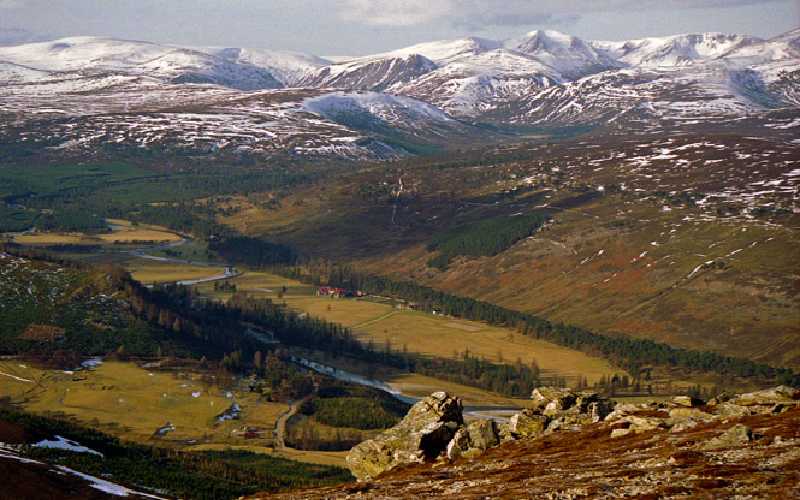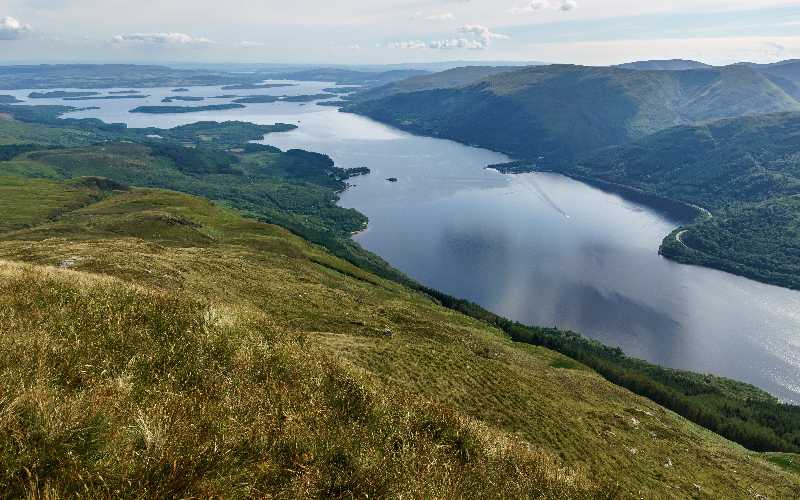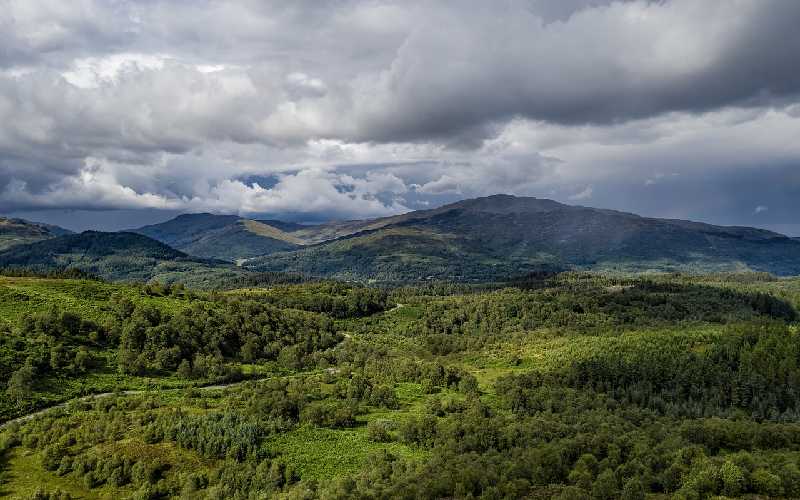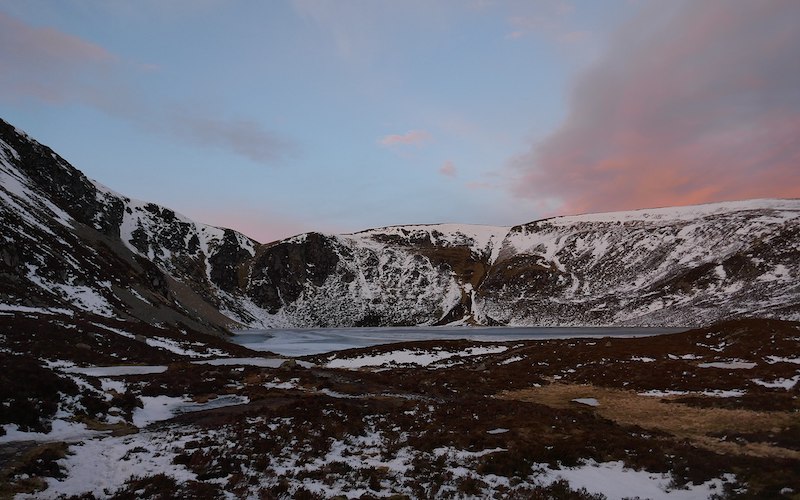Scotland has two national parks. The first park, Loch Lomond and the Trossachs, was established in 2002 and is located on the west coast of Scotland around 50 miles (80 km) north of Glasgow. The Cairngorms National Park , which covers a greater area than Loch Lomond and the Trossachs, was established in 2003. It is located in Scotland’s north-east and extends into Aberdeenshire and Perthshire. The Cairngorms area covers 885 square miles (2,299 km²), making it the largest British national park.
How are National Parks in Scotland Approved?
National Parks are large areas of land which meet certain criteria – they must be large enough to contain areas of outstanding natural beauty (AONB), plus there must also be a cultural or historical interest There is no size limitation on National Parks and around 84% of designated land across Britain is actually National Park. A National Park can also be created for non-natural purposes eg the New Forest in England was first established as a royal hunting reserve
The Cairngorms

The Cairngorms is located on the northern edge of Scotland and has extensive mountain plateaux, deep valleys and ancient forests with many rare species. The name ‘cairn’ refers to the rocky outcrops that can be found in many areas, and ‘gorm’ means blue. Therefore the Cairngorms mean “blue hills”, and can also be referred to as the Blue Hills. This name is apt because of their beautiful colouring – when seen from below they appear azure blue but when seen from the top of a hill they are more grey in colour and appear to be capped with snow.
The Cairngorms is home to many species of animals, such as wildcats, red squirrels, capercaillie (very large black birds), merlins and ospreys (large hawks). It also supports many plants and trees, including the Scots pine, birch, and rowan. The Cairngorms Visitor Centre is a great place to visit for more information on the interesting wildlife that can be found in the National Park.
The Cairngorms hosts three ski resorts which provide year-round skiing opportunities – Glenshee, The Lecht and Glen Coe. These resorts have excellent facilities including ski schools for beginners and also several challenging runs. There are seats reserved on the gondola lifts for skiers who can’t walk up the short inclines!
The Cairngorms National Park is very popular with hillwalkers and there are lots of opportunities to get out and enjoy the fresh air. A good way to get an insight into what you can expect in the park, as well as access information on routes and maps is to download the free Cairngorms National Park app which was published in November 2016
Cultural Interest in the Cairngorms
The Cairngorms are rich in history and culture. The area has been inhabited for thousands of years – there is evidence that people were living there 8000 years ago! There are many standing stones to be found dotted over the landscape which serve as reminders of those early settlers.
There used to be a land trade route from Deeside to Badenoch but the most well known route linked Deeside with Glenlivet. The Romans built roads along this route and many other old tracks which you can still see today.
Many castles, ruined abbeys and Christian sites are dotted around the park including Slioch in Strathdon (an Iron Age fort), Eilan Donan Castle on the shores of Loch Duich, the site of the Battle of Culloden (home to Bonnie Prince Charlie) and Glenorchy Chapel. One of the most well known sites in the Cairngorms is Abernethy which is home to a great stone circle – approximately 500 meters across made up of 27 stones.
Loch Lomand and the Trossachs National Park
Loch Lomond and The Trossachs, north of Glasgow as well as in the Central Highlands has been designated a National Park since 2002. This was due to its being ‘of international importance for nature conservation’. With an area of over 1,200 km² and having been declared as one of the most biologically diverse areas in Europe, it is a haven for hillwalkers and cyclists.
Loch Lomond was created by glacial action over thousands of years. It formed as the glacier retreated at the end of the last ice age leaving behind a body of water known to be cradled among the hills of the Trossachs. The lake is 16 km long and has an average depth of only 14 metres making it the deepest inland waterway in Scotland with a surface area of 31 square kilometers. It lies 717m above sea level and could hold up to 10 billion tons of water, which makes it the third largest natural freshwater body in Britain.

The area is internationally renowned for its outstanding natural beauty, special wildlife habitats and biodiversity with over 260 bird species having been recorded in this area. It has also played an important role in the lives of many famous historical figures such as Rob Roy MacGregor who lived in the area and was known as the ‘Culdee Robin Hood’.
Many famous castles and old ruins are located within the park including Dull, Cairndow, Rowardennan and Slioch. The scenery of Loch Lomond has been used in many TV programmes including Dr Who as well as films such as Rob Roy (film) which was set around the hills of Balquhidder near Stronachlachar. In recent years the site has been included as one of the world’s eight great natural wonders and according to a paper published in Geography Compass by Dr Graeme Hudson from Queen Margaret University in Edinburgh, it is also the most picturesque lake in Britain!
Loch Lomond & The Trossachs National Park is the most visited of all the national parks in Scotland and brings millions of visitors each year. The park offers many attractions including walking, cycling and wildlife watching tours as well as boat trips on Loch Lomond and a miniature railway which circumnavigates the loch (full circuit would take around two hours). There are plenty of opportunities for mountain-biking as well as horse riding. There are also many interesting historical sites that can be visited, such as Stronachlachar Caves where Robert the Bruce hid from a pursuing English army and Callender House which was once Queen Victoria’s holiday home.

Wildlife in the Trossachs
There are lots of interesting wildlife and plant species to be found in the national park including red squirrels, otters, ospreys and capercaillie. The Trossachs are also home to the Càrn an t-Sìthein – a stone that turns in response to the movement of the Moon! It is said that this phenomenon was witnessed by Robert Bruce. The Trossachs have many cultural interests including Callendar House, where Queen Victoria and Prince Albert often visited. There is an impressive walled kitchen garden here which gives you an insight into how the estate was run in that period.
It is also possible to stay in the area and offers a wide range of accommodation – from small bed and breakfasts to luxurious hotels.
The park is governed by its own planning authority. Within that authority there are eight wardens who manage the areas surrounding Loch Lomond itself, while a further five wardens manage Loch Katrine and other parts of The Trossachs National Park. There is a £2.5 million visitor centre at Loch Lomond near Balmaha and there are other centres at Clachaig Inn, Callander and Rowardennan.
We hope that you have found our guide to the National Parks in Scotland helpful. We would love to hear from your once you have visited – please post and share your ideas below.
You might also like to read about the 10 National Parks in England.


2 thoughts on “National Parks in Scotland – The Cairngorms and Loch Lomond & The Trossachs”